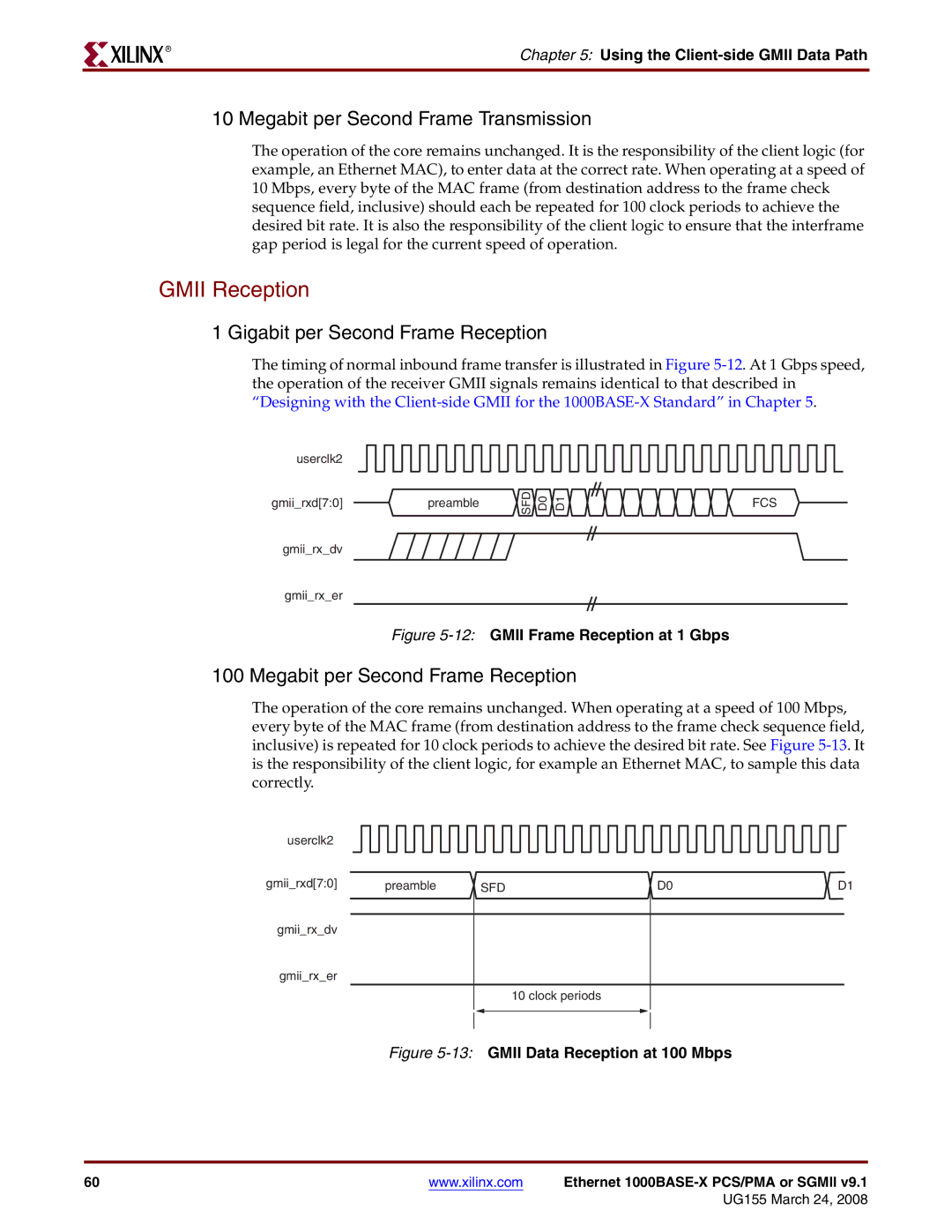
R
Chapter 5: Using the Client-side GMII Data Path
10 Megabit per Second Frame Transmission
The operation of the core remains unchanged. It is the responsibility of the client logic (for example, an Ethernet MAC), to enter data at the correct rate. When operating at a speed of 10 Mbps, every byte of the MAC frame (from destination address to the frame check sequence field, inclusive) should each be repeated for 100 clock periods to achieve the desired bit rate. It is also the responsibility of the client logic to ensure that the interframe gap period is legal for the current speed of operation.
GMII Reception
1 Gigabit per Second Frame Reception
The timing of normal inbound frame transfer is illustrated in Figure
userclk2
gmii_rxd[7:0]preamble
gmii_rx_dv
gmii_rx_er
SFD D0 | D1 |
FCS
Figure 5-12: GMII Frame Reception at 1 Gbps
100 Megabit per Second Frame Reception
The operation of the core remains unchanged. When operating at a speed of 100 Mbps, every byte of the MAC frame (from destination address to the frame check sequence field, inclusive) is repeated for 10 clock periods to achieve the desired bit rate. See Figure
userclk2
gmii_rxd[7:0]
gmii_rx_dv
gmii_rx_er
preamble | SFD | D0 | D1 |
|
| 10 clock periods |
|
Figure |
| ||
60 | www.xilinx.com | Ethernet |
|
| UG155 March 24, 2008 |
